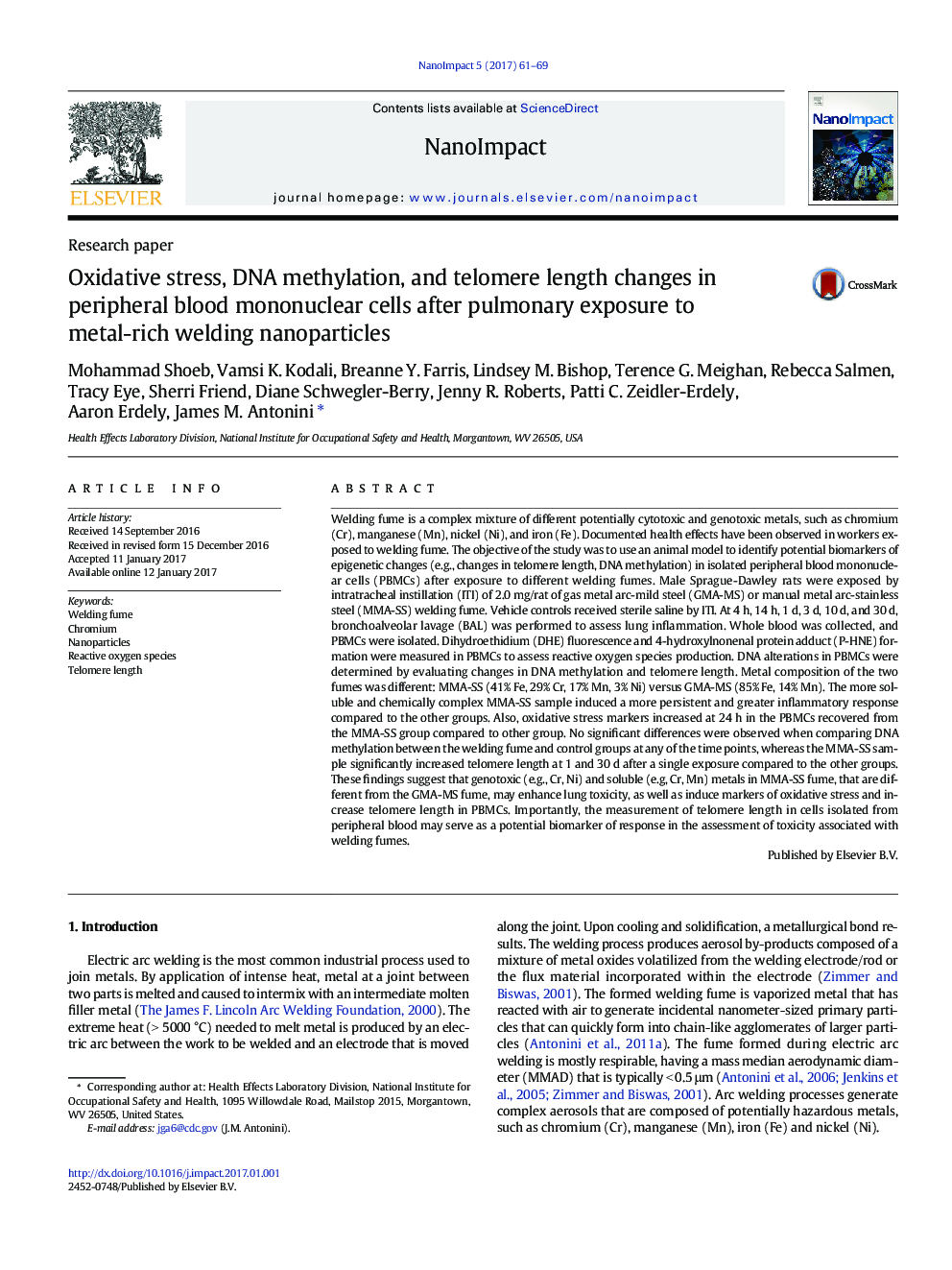| کد مقاله | کد نشریه | سال انتشار | مقاله انگلیسی | نسخه تمام متن |
|---|---|---|---|---|
| 5560714 | 1562022 | 2017 | 9 صفحه PDF | دانلود رایگان |

- Welding fume is a nanoparticle composed of different cytotoxic and genotoxic metals.
- Documented health effects have been observed in workers exposed to welding fume.
- Welding fume induce oxidative stress and increase telomere length in PBMCs.
- Measurement of telomere length peripheral blood may serve as a biomarker in welding fume toxicity.
Welding fume is a complex mixture of different potentially cytotoxic and genotoxic metals, such as chromium (Cr), manganese (Mn), nickel (Ni), and iron (Fe). Documented health effects have been observed in workers exposed to welding fume. The objective of the study was to use an animal model to identify potential biomarkers of epigenetic changes (e.g., changes in telomere length, DNA methylation) in isolated peripheral blood mononuclear cells (PBMCs) after exposure to different welding fumes. Male Sprague-Dawley rats were exposed by intratracheal instillation (ITI) of 2.0Â mg/rat of gas metal arc-mild steel (GMA-MS) or manual metal arc-stainless steel (MMA-SS) welding fume. Vehicle controls received sterile saline by ITI. At 4Â h, 14Â h, 1Â d, 3Â d, 10Â d, and 30Â d, bronchoalveolar lavage (BAL) was performed to assess lung inflammation. Whole blood was collected, and PBMCs were isolated. Dihydroethidium (DHE) fluorescence and 4-hydroxylnonenal protein adduct (P-HNE) formation were measured in PBMCs to assess reactive oxygen species production. DNA alterations in PBMCs were determined by evaluating changes in DNA methylation and telomere length. Metal composition of the two fumes was different: MMA-SS (41% Fe, 29% Cr, 17% Mn, 3% Ni) versus GMA-MS (85% Fe, 14% Mn). The more soluble and chemically complex MMA-SS sample induced a more persistent and greater inflammatory response compared to the other groups. Also, oxidative stress markers increased at 24Â h in the PBMCs recovered from the MMA-SS group compared to other group. No significant differences were observed when comparing DNA methylation between the welding fume and control groups at any of the time points, whereas the MMA-SS sample significantly increased telomere length at 1 and 30 d after a single exposure compared to the other groups. These findings suggest that genotoxic (e.g., Cr, Ni) and soluble (e.g, Cr, Mn) metals in MMA-SS fume, that are different from the GMA-MS fume, may enhance lung toxicity, as well as induce markers of oxidative stress and increase telomere length in PBMCs. Importantly, the measurement of telomere length in cells isolated from peripheral blood may serve as a potential biomarker of response in the assessment of toxicity associated with welding fumes.
Journal: NanoImpact - Volume 5, January 2017, Pages 61-69